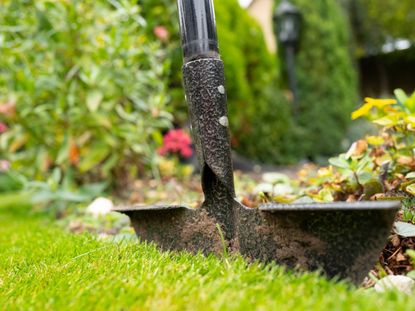Gardening Tools
Be a tool expert in your garden. Each gardening tool serves a different purpose, so it's a good idea to know about the right tool for the job. Learn which is which, and how to care for them when you're finished prodding, digging, clipping, hoeing or just having fun in the garden.
Gardening Tools
-

How To Use Soil Heating Cables To Grow In Winter
Soil heating cables are popular for a simple way to provide consistent warmth for soil in winter, but how to use heating cables? Click here and find out.
By Mary Ellen Ellis
-

The Environmental Impact Of Electric Vs. Gas Yard Tools
If your gardening requires machinery, learn the difference in the environmental impact of electric vs. gas powered tools.
By Mary Ellen Ellis
-
What Is A Cape Cod Weeder – Learn How To Use A Cape Cod Weeder
Folks from the U.S. eastern coast probably already know how to use a Cape Cod weeder, but the rest of us are wondering what the heck it is. Here’s a hint: A Cape Cod weeder is a tool, but of what sort? Click here to find out about using a Cape Cod weeder in the garden.
By Amy Grant
-
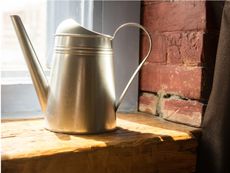
Houseplant Gardening Tools - Essential Houseplant Tools
Raising houseplants isn’t as difficult or dirty as outdoor gardening, but a few tools make it easier. Here are a few of our favorite indoor houseplant tools.
By Mary H. Dyer
-
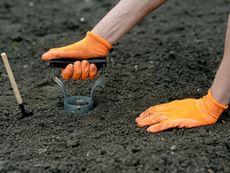
Tools For Planting Bulbs - What Is A Bulb Planter Used For
Garden chores can be extremely strenuous, and planting flowering bulbs is no exception. Read on to learn about the tools that can help.
By Tonya Barnett
-

Toddler Size Garden Tools - Choosing Garden Tools For Toddlers
The advantages of involving toddlers in the garden are numerous. Learning more about the very special needs of this unique demographic of future growers can help to ensure that time spent outdoors is valuable, enjoyable, and safe.
By Tonya Barnett
-

Gardening Tools And Arthritis - Garden Tools For Arthritic Hands
Joint pain caused by arthritis can affect anyone, including gardeners. Fortunately, there are several arthritis-friendly gardening tools now available to make things easier.
By Tonya Barnett
-
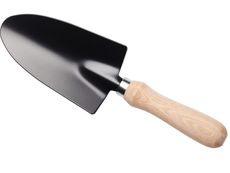
Garden Trowel Types - Are There Different Kinds Of Trowel
Becoming better familiar with tools is a way for novice growers to begin working smarter, not harder. Learning about the different kinds of trowels used in the garden is a good place to start.
By Tonya Barnett
-
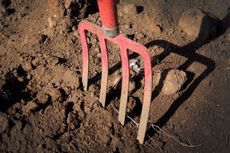
Digging Fork Functions: What Is A Digging Fork Used For In Gardens
Have you ever tried to dig into rocky or extremely compacted, clay soil with a garden spade? It can be back-breaking work. Using a digging fork for a job like this can reduce the strain on your body and tools. Click here to learn when to use digging forks in garden projects.
By Darcy Larum
-

Using Round Point Shovels – How To Use A Round Head Shovel In The Garden
A round head shovel is one of the most often used tools when developing a garden. What is a round point shovel used for? Learn more about this type of shovel, how to choose one, and the best time to use it in the following article.
By Bonnie L. Grant
-
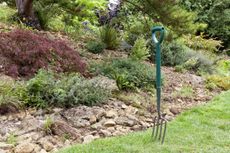
Tips On Using A Garden Fork – Learn When To Use A Garden Fork
A gardening fork is one of the most important tools to have around the garden, along with a shovel, rake, and pair of shears. Available forks include large versions for upright work and small ones for more detailed, low-to-the-ground tasks. Learn more here.
By Ilana Goldowitz Jimenez
-
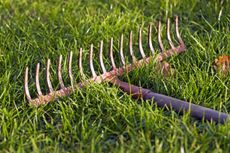
What Are Rakes Used For: Different Kinds Of Rakes For Gardening
When a lot of people hear rake, they think of the big plastic thing used to make leaf piles. And, yes, that's a perfectly legitimate kind of rake, but it's far from the only one, and not really the best tool for gardening. Learn more about different rakes in this article.
By Liz Baessler
-

Choosing Garden Gloves: Selecting The Best Gloves For Gardening
Ok, not everyone is a fan but wearing gloves in the garden is actually important if you want to avoid pricks from thorns, splinters, or nasty blisters. What's every bit as important, though, is the type of gardening glove you choose. This article will help.
By Darcy Larum
-
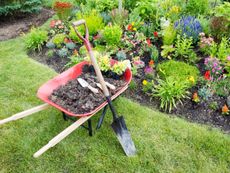
What Is A Transplant Spade: Using Transplant Spades In The Garden
Almost every gardener has a shovel, and probably a trowel too. And while you can get a long way with a few simple tools, it's sometimes nice to have the perfect utensil for the job. One such item is the tree transplant spade. Learn more in this article.
By Liz Baessler
-
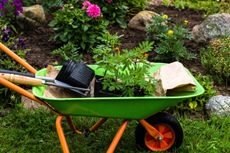
Choosing A Wheelbarrow – Learn About Different Types Of Wheelbarrows
Not all wheelbarrows are the same, though, so which type of wheelbarrow you should buy depends on the tasks you need it for. Click the article that follows to learn more about how to choose a wheelbarrow and the different types of wheelbarrows.
By Darcy Larum
-
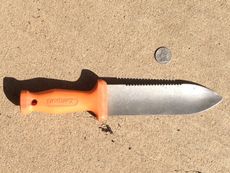
Japanese Digging Knife – Using A Hori Hori Knife For Gardening
The hori hori, also known as the Japanese digging knife, is an old tool that's getting a lot of new attention. While most Western gardeners may not have heard of it, it seems that everyone who does falls in love. Learn more about using a hori hori knife here.
By Liz Baessler
-

Choosing Shovels For Gardens: What Shovel Do You Need For Gardening
Correctly choosing and using shovels in the garden is important. Choosing the right type of shovel for the job will help you work more effectively and avoid injuries. It will also provide better results for your garden. This article will help make your selection easier.
By Ilana Goldowitz Jimenez

